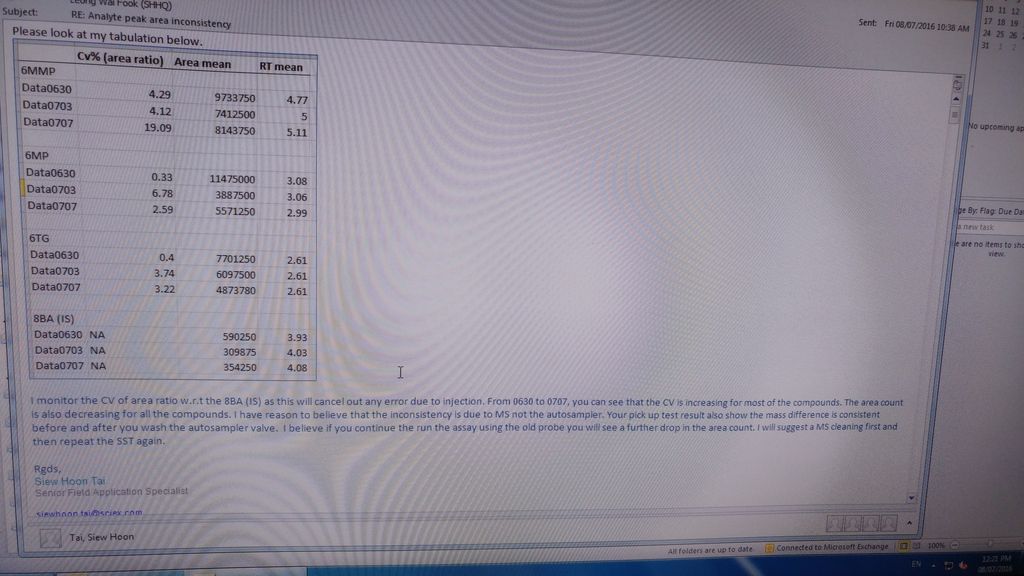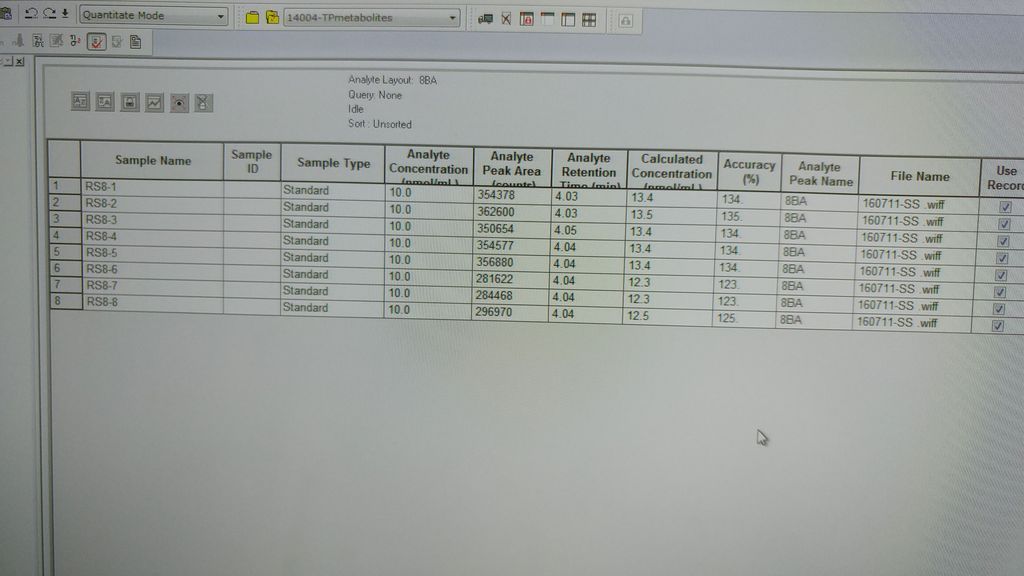My problem is still not solved but ABSciex is now questioning about the method in which I am running the assay because its in isocratic mode. They came down to check my system using their standard analyte reserpine on their column and ran gradient mode and said my system was fine, CV% was fine.
They also ran my analytes on their column using gradient method and it was fine too so they are now pin pointing on my method and asking me to change it because apparently there is carry over effect.
Typically I wouldn't mind changing it if I am in a research lab but I am in a clinical lab so changing a validated method requires a lot changes in paperwork, validation and also SOP
And it makes no logic that a method will fail after 2 years of running smoothly plus the method is based off one that was developed by Prometheus Laboratories:
http://www.clinchem.org/content/51/11/2074.fullOur assay is based off this method almost to 100%, the parameters and even sample extraction is exactly the same. The only difference is that they are using an agilent 1100 HPLC and Absciex API 200 whereas I am using an Agilent 1290 UHPLC and AbSciex Qtrap 5500


